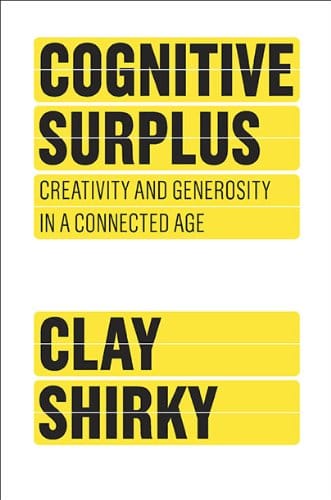In his new book Cognitive Surplus Clay Shirky argues that in the last 50 years many of those living in industrialized countries have seen a dramatic increase in free time, paired with better education and a higher standard of living. But a very large part of that free time or cognitive surplus is now routinely used to watch television, a passive activity that makes us a consumer rather than a participant. In a trend that is also true for other media (eg. music), we have seen a shift away from participation (usually on an amateur level) towards consuming professionally produced media content.
In the last few years we have seen a dramatic change in Internet technologies that now make it extremely easy for everybody to produce content and distribute it on the Internet (e.g. Wikipedia, blogs, photos on Flickr, or YouTube videos) something we usually call Web 2.0 or social media. Clay Shirky contrasts the time that users spend editing Wikipedia (or other social media activities) with the hours we typically watch television to kill the argument that most of us would have no time for social media.
The combination of increased free time and social media is creating a lot of interesting collaborative projects, and the book is full of interesting examples. Clay Shirky stresses that social media only enable new uses of the cognitive surplus, it is how they are used that decides whether we create personal, communal, public or civic values. He uses ICanHazCheeseburger (a popular website that shows cute pictures of cats with cute captions) as an example for communal value, the Apache Webserver Open Source software project as an example of public value, and Ushahidi.com (a site started to allow citizens to track outbreaks of ethnic violence in Kenya) as an example of civic value.
Social media in the context of science and medicine are discussed briefly in the book. Clay Shirky describes the Invisible College, a group formed around 1645 in London by Robert Boyle, Robert Hooke and others that established many of the principles of conducting science that are still valid today (test every hypothesis with experiments, describe experiments detailed enough so that they could be reproduced, etc.). The group formed the core of what a little later became the Royal Society. Clay Shirky argues that the collaborative nature of how science was conducted by the Invisible College lead to a dramatic increase in our scientific knowledge and contrasts this with how alchemy was performed at the time (reclusive and secretive).
Clay Shirky also talks about PatientsLikeMe.com, a site that allows patients with chronic diseases to share their health information, both for personal advice, but also as participants in clinical trials. Patients Like Me only works because patients are willing to share their personal healthcare information, and that is a cultural shift from the strict privacy that usually surrounds information about your personal health. Patients participating in Patients Like Me obviously think that the benefits from sharing their personal healthcare information outweigh the risks.
Cognitive Surplus is very entertaining reading, and on almost every page Clay Shirky gives us food for thought that will keep us busy for days or weeks. The book is required reading for everybody who is interested in how social media are changing the way we consume, communicate, and conduct science. After finishing the book, you will no longer think that the scientific article of the future is primarily about integration of video or other multimedia, intelligent navigation, or display on mobile devices. The successful journals of the future will be those that work hardest in facilitating collaboration among scientists, and this requires cultural changes as much as it requires technological changes.


